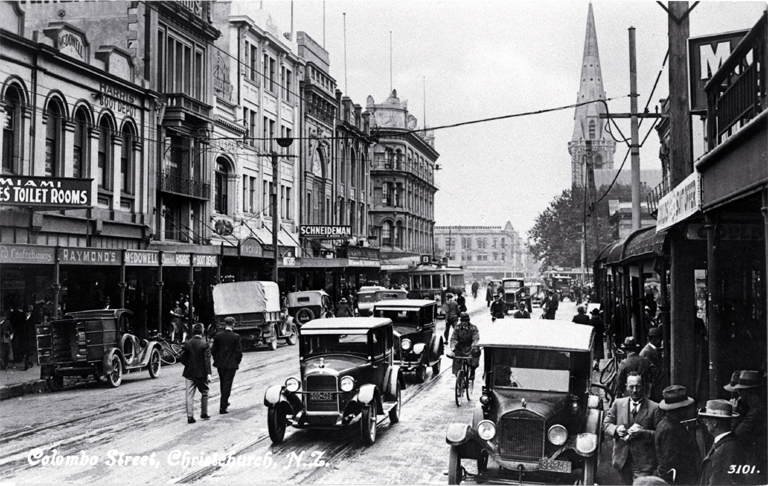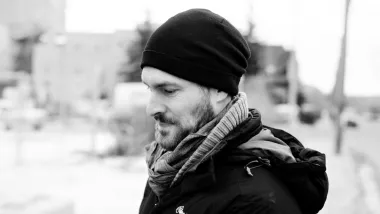Being on the street used to be a dance, but not so since the automobile took over. Is there a way for all modes to coexist through a mutual ethic rather than compete for a street’s right of way?

Get ready cities, here come the bike lanes! Although it’s the trendy topic these days, cycling has been a mode of urban transportation for well over a hundred years. To quote LL Cool J: “Don’t call it a comeback, I been here for years, rockin’ my peers and putting suckas in fear!”
After having been marginalized by the march of the automobile, bicyclists are starting to bob and weave their way back onto city streets. It isn’t much of a fight. Cyclist vs. driver might be hosted in the same ring but clearly they aren’t in a competing weight class.
Instead of equalizing the contenders, our current tactic is to cancel the main event and relegate users to their corridors of movement: sidewalks, bike lanes, driving lanes. It’s the perceived safe and reasonable thing to do. But now a new fight: the battle to get bike lanes onto streets. Sorry drivers—good-bye driving lanes and parking stalls! Slowly the city is wresting itself from the automobile’s grip. And to get people out of their cars it’ll take no less than appropriate, convenient and beautiful bicycle infrastructure. That should quell our tendency to believe the car is the right way of urban living. But sometimes our enabling infrastructure can have unintended consequences. Can a bike lane be detrimental to cyclists?
Being on the street used to be a dance. The first motorists had to sashay, moonwalk or perhaps twerk with the other dancers on the street. A motorist had to negotiate with other users; he had to pay attention to a pedestrian, a horse drawn carriage, a cyclist. But soon, as with our modern tendency to separate faculties for efficiency, the social and physical infrastructures were put in place to enable the automobile. In the musical chairs of using the street the car caught the last seat. The walker was literally cast aside, to the sidewalk. As the automobile continued to advance, so cities came to be designed for them—gas stations, wider streets, clover-leafs, suburbs, sound walls, garages, big box stores and on and on. And with this the incapacitation of other forms of transportation.

And now we’re left with our urban legacy: cities designed for the car. But we’ve been living in cities for thousands of years, and little is static in the manifestation of our desires, of all our mixed and muddled dreams and wishes. We’re becoming aware that perhaps the automobile isn’t the best way to orient the city. Maybe cities should be more people-scale oriented. And here’s the rub: instead of returning to the dance, we’re marching away.
For a quick cycling win we paint lines on a street, put up signage, and claim a success. “Here be bike lane!” And it is a success. But it’s also still a bike lane in an auto-oriented street—or even an auto-oriented neighbourhood. The lane might help a bit, it’s good for optics and awareness-raising, but in the winter it tends to be where the snow gets plowed, along with the accompanying gravel. During winter’s thaw, or rain showers, it’s where the cyclist goes to be sprayed by passing motorists. Sometimes they’re closed during non-commuting hours. But these design shortcomings have a deeper psychological shortcoming:
There’s no shared ethic, no negotiation; there’s no more dancing!
But who wants to dance with a car rushing by at 50, 60, 80 km/h?
Party crashers should be relegated to a wallflower, relegated to arterial roads. That’s where those speeds belong. But they can be invited onto the dance floor. They’ll just have to slow down a little. Instead of relegated to marching, let’s embrace dancing. Design streets for a shared ethic, for sharing space. It’s where the community is; it feels like a place; it’s where people dance, live,be.
And maybe, just maybe, a motorist will see this, will want to let go her car, ask her city administrators and councillors for dance-able streets. Yes, dance-able! Streets, as Lewis Mumford might have said, are for lovers. Communities, by definition, are places of sharing, so let’s share the road too, make it dance-able, not just for walkers and cyclists and drivers but for dancers. The transportation system is a complex one but there is indeed room in it for negotiating the use of its space. Bring on dance-ability!
To help get you onto the dance floor, here’s Daft Punk featuring Pharrell Williams to lift you up out of your seat!
I know you don't get a chance to take a break this often
I know your life is speeding and it isn't stopping
Here take my shirt and just go ahead and wipe up all the
Sweat, sweat, sweatLose yourself to dance
Lose yourself to dance
Lose yourself to dance
Lose yourself to danceLose yourself to dance
Lose yourself to dance
Lose yourself to dance
Lose yourself to dance
Connect with Steven on Twitter @stevenpsnell or Facebook stevenpsnell.
His novel, The Undergraduates, is available for download here, or at any fine ebook retailer.

Planetizen Federal Action Tracker
A weekly monitor of how Trump’s orders and actions are impacting planners and planning in America.

Chicago’s Ghost Rails
Just beneath the surface of the modern city lie the remnants of its expansive early 20th-century streetcar system.

Amtrak Cutting Jobs, Funding to High-Speed Rail
The agency plans to cut 10 percent of its workforce and has confirmed it will not fund new high-speed rail projects.

Ohio Forces Data Centers to Prepay for Power
Utilities are calling on states to hold data center operators responsible for new energy demands to prevent leaving consumers on the hook for their bills.

MARTA CEO Steps Down Amid Citizenship Concerns
MARTA’s board announced Thursday that its chief, who is from Canada, is resigning due to questions about his immigration status.

Silicon Valley ‘Bike Superhighway’ Awarded $14M State Grant
A Caltrans grant brings the 10-mile Central Bikeway project connecting Santa Clara and East San Jose closer to fruition.
Urban Design for Planners 1: Software Tools
This six-course series explores essential urban design concepts using open source software and equips planners with the tools they need to participate fully in the urban design process.
Planning for Universal Design
Learn the tools for implementing Universal Design in planning regulations.
Caltrans
City of Fort Worth
Mpact (founded as Rail~Volution)
City of Camden Redevelopment Agency
City of Astoria
City of Portland
City of Laramie






























